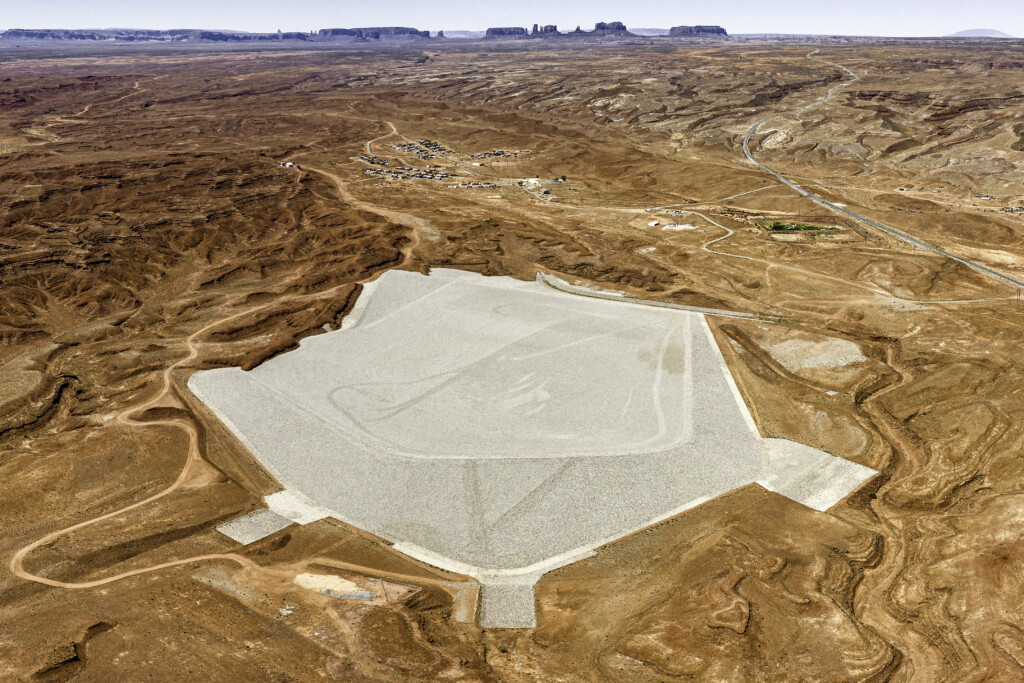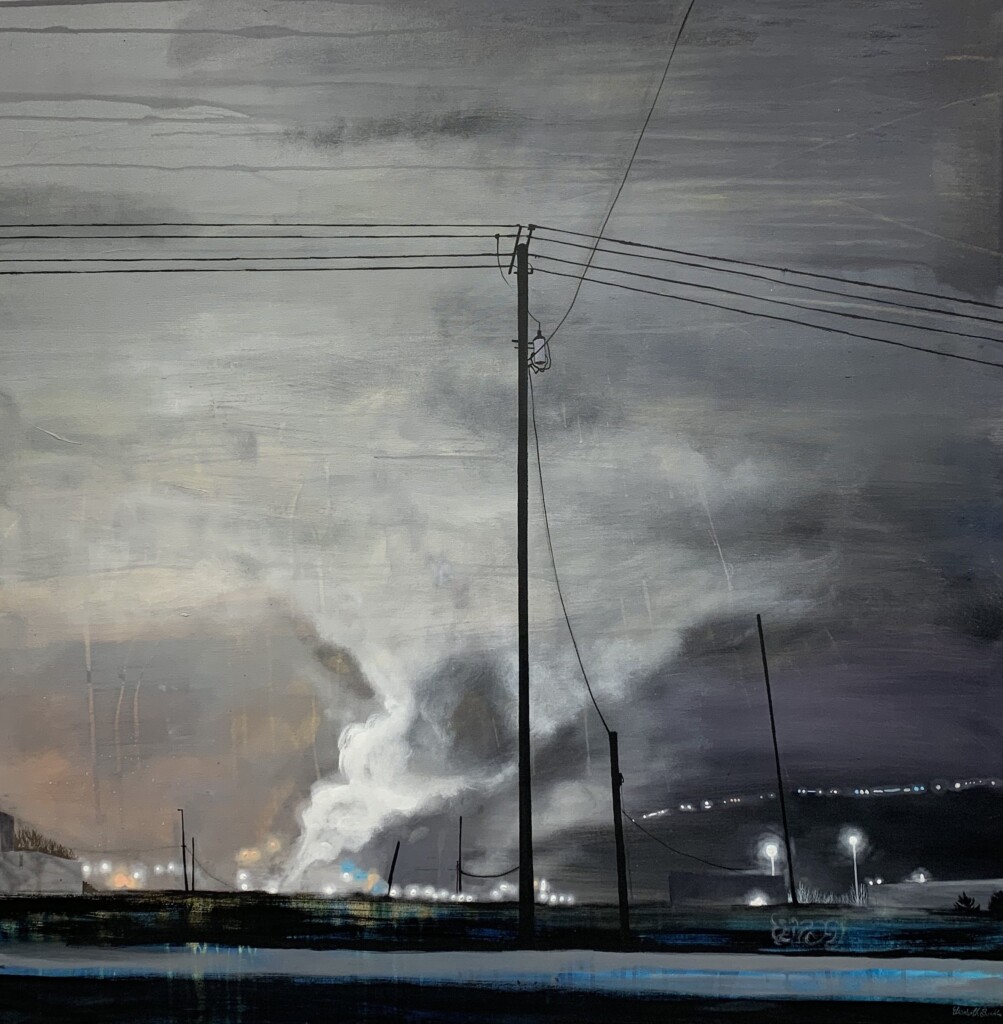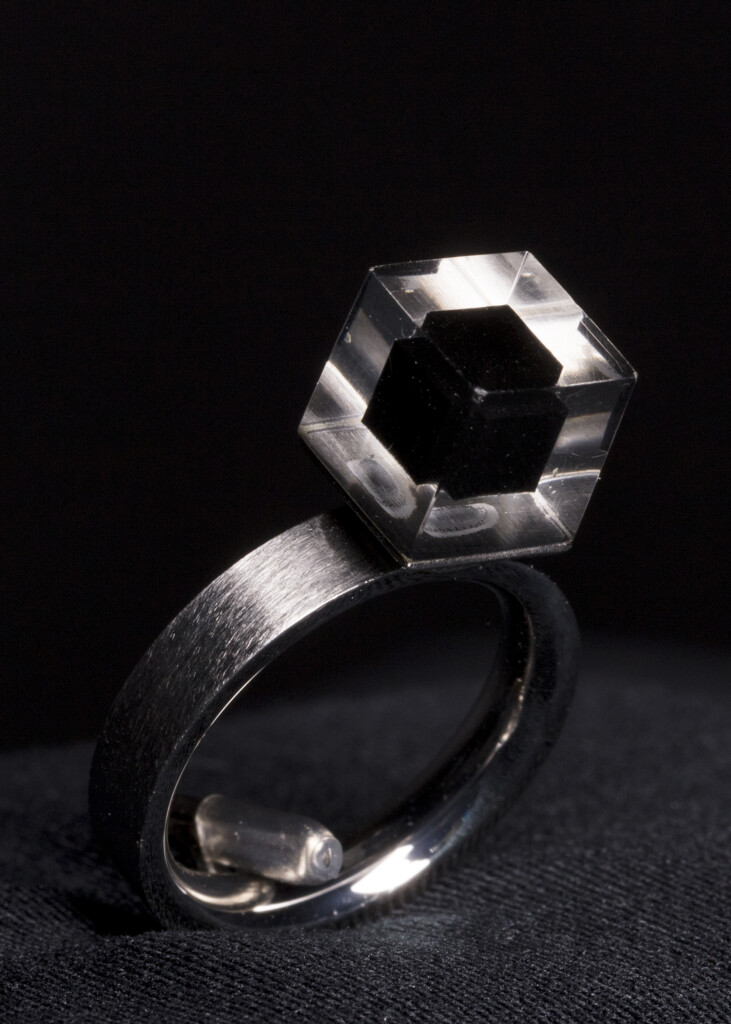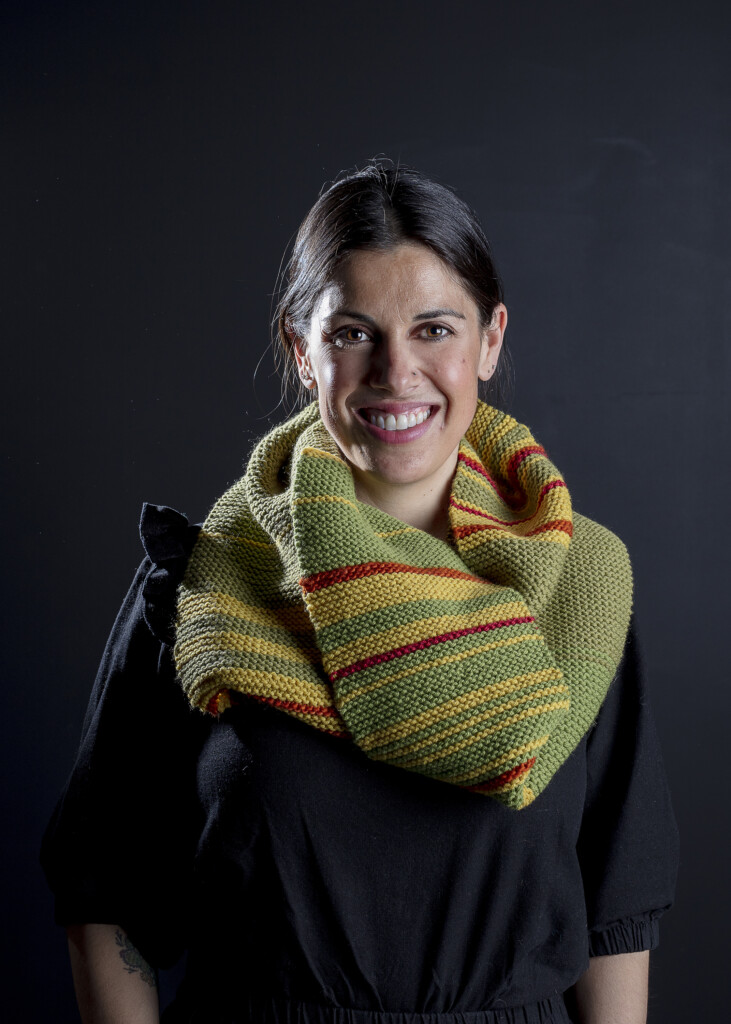EDITOR’S NOTE: This feature is presented in Spanish and English versions, both primarily made possible by Mark Alvarez. The Utah Review deeply appreciates his willingness and linguistic fluency to prepare proper versions in both languages. For the Spanish version of this feature, see here.
Stepping into the AIRLab, Santa Fe artist Will Wilson’s creation, one is immediately absorbed by the rich volume of information evident in this unique hogan, a steel-framed greenhouse with furniture and books that could be the setting of a home’s library or den. One also notices the medicinal and edible native plant species, which have long been significant for the Diné/Navajo peoples. The geometry of the hogan dome evokes the framework of the world’s first atomic bombs.

Nearby are large photographs by Wilson that document mining sites for uranium inside the borders of the Navajo Nation in parts of New Mexico, Utah and Arizona. One of those areas was Mexican Hat, Utah, where a disposal site for uranium mill tailings operated in the 1950s up until the mid-1960s. Wilson’s photographs represent the land survey perspective that would have been evident during that period.
Returning to the hogan, visitors learn that the plants are more than natural accents to the decor. The plants have been recognized for how they assist the process of extracting and remediating the most harmful substances from uranium-contaminated soil. Scientists from around the world are studying many different species of native plants in areas that were mined for heavy metals and which hold promise for phytoremediation, as researchers refer to it. In the Navajo Nation, for example, these include plant species of sunflower and Indian mustard.
The hogan is part of Air, a fascinating, informative multidisciplinary exhibition at the Utah Museum of Fine Arts at The University of Utah. The exhibition features internationally known artists, along with peers from Utah, and creative designers, poets and producers who bring and integrate scientific, cultural and social issues perspectives into their work. The exhibition addresses air pollution but it also extends to many literal and metaphorical aspects about air that have an impact upon culture, social justice, community life and the sustainability of human existence. Curated by Whitney Tassie, the exhibition is sponsored by The Andy Warhol Foundation for the Visual Arts and the ESRR Impact Endowment.

Air signifies a major step in UMFA’s conscientious practice to incorporate the creative and thematic epiphanies of the exhibitions it presents. Museum staff assessed their own practices to see if they could limit problems associated with waste, emissions and sources of air pollution. For example, the museum staff typically use vinyl for an exhibition’s signage and their promotional materials but with this show, organizers relied on Air-Ink, which comes from upcycled carbon emission particulate matter and is produced by Graviky Labs, Inc. Shley Kinser, a local artist and sign painter, used Air-Ink to produce the texts for the walls in the exhibition space.
Also, the museum’s marketing campaign for the exhibition was produced without paper and hard copy printing. Existing pedestals are being reused for display while LED lights are used for lighting design. Staff members also minimized the use of shipping fine art by air transport.

There are three Utah artists represented in the exhibition. Virginia Catherall’s Salt Lake Air Quality Scarf 2020, knitted from wool, comprises rows of stitches, each representing a day in that year to record Salt Lake City’s air quality, as measured according to the U.S. Environmental Protection Agency’s index for reporting air quality, the Air Quality Index (AQI). Catherall used four colors, including green and yellow for good and moderate air quality, respectively, and orange and red to signify when AQI readings were in the unhealthy range. Viewers will take note of the long stretch of green rows when normal business and traffic ground to a halt during the early stages of the pandemic. They also will see the periodic spikes at various points in the year such as the late spring and summer when protests supporting the Black Lives Matter movement were in full swing. The scarf is an excellent visual representation of the swings from inactivity to activity, especially later in 2020 when businesses and activities resumed in varying degrees.
There are photographs by Ed Kosmicki, of Salt Lake City, who has documented the impact and response to Utah’s air quality concerns. From 2014, Why do we keep having to protest this sh*t? represents a protest in the midst of winter at the Utah State Capitol, during one of the worst periods of the inversion which plagues the community every year. More than 4,000 participated in that January 25, 2014 protest. In Under the Bad Air of Heaven, Kosmicki documents the problem which can be just as bad in the summer as in the winter. His composition is comprehensive in scope for presenting both the visible impact of pollution but also for symbols such as public transportation (the TRAX light-rail system) and the seat of state government at the Capitol as potential outlets for real change.

Working with acrylic on canvas, Elizabeth Bunker produced an astonishing painting of nighttime air pollution during a persistent winter inversion. The 2019 work, View of Refineries from 300 N on January 11th, is surreal at first glimpse but it also captures the utter realism of the scene, which would be familiar for anyone looking from the edge of downtown Salt Lake City northward. The shroud of steam, the texture of air that can feel chunky during a winter inversion, the power lines, and the hazy city lights signify the formidable power and energy infrastructure, which must be brought under control.
Just as we typically think about air as being invisible, the artists bring every dimension of what we breathe and associate with air to tangible realities. Eleven of the exhibition works also have been acquired as part of UMFA’s permanent collection. This falls in line with the museum’s holistic conscientious undertaking to make the exhibition’s impact last beyond its December 11 closing date.
They include World Leaders in Smog (2019) and Smog Map (2009), by Kim Abeles, an artist based in Los Angeles. World Leaders features 10 heads of state who appeared at global climate summits during the 2010s, represented in stencil plates which she left outdoors exposed so they would accumulate particulate matter. Smog Map, another work in the Smog Collectors series, emphasizes the ubiquity of air pollution. The stenciled images are clarified by the particulate matter resulting from smog, as she leaves them exposed to air for periods ranging anywhere from four days to a month.

The remnants of pollution can be transformed into objects of beauty. Smog Free Rings are fashioned from a transparent cube and stainless steel, created by Dutch artist Dan Roosegaarde (Studio Roosegaarde). The particulate matter was compressed and collected from the studio’s 23-foot-tall air purifying tower. It can clean 30,000 cubic meters (or more than 1 million cubic feet) of air each hour, and its electrical power usage is similar to a tea kettle to boil water.
Another Santa Fe-based Indigenous artist featured in the exhibition, Cara Romero (Chemehuevi) created Evolvers, by photographing two sets of brothers from the Chemehuevi Valley Indian Reservation in pre-colonial dress at a Palm Springs, California wind farm. The work evokes resilience but it also gives real substance that is usually expressed in the familiar templates of land acknowledgments. The young men Romero features are poised to be the next generation of stewards to sustain their culture and the site of this work represents the ancestral lands of the Chemehuevi’s sister tribes in the Mojave Desert. Romero’s work connects to the problematic historical legacies Wilson explains in his work highlighting the remnant effects of uranium mining in the Navajo Nation. Evolvers brings the contemporary concerns forward that even as promising as developing renewable energy infrastructure appears, it is essential that Indigenous tribes and peoples are consulted and brought to the table because reciprocity and rehabilitation of the land and environment go hand in hand, especially when such projects are slated to be carried out on their tribal lands.

A third Indigenous artist based in Santa Fe, who is featured in the exhibition is Diego Romero (Cochiti Pueblo), whose two lithographs also have been acquired by the UMFA. Both signify issues of major recent social urgency. They include Girl in the Anthropocene (2017), featuring a pregnant woman who is doing laundry, which highlights how air pollution has aggravated pregnancy-related risks, including higher incidence of miscarriage, low birth weight or congenital medical conditions. The second is American Diastrophism (2020), which portrays three armored and armed police facing a lone protestor, who is holding a cellphone. The smoke of tear gas and other incendiary devices police use to quell protests obscures the identity of the trio of officers. They are protected from experiencing any side effects of the pollutants they set off during the protests.
Another major UMFA acquisition, which also is part of the exhibition, comes from the work of Chinese artist Ai Weiwei, who lives in Portugal. His 2021 series of masks with ink titled, The Way Follows Nature, 2021 emphasizes Native Hawai‘ian culture by intertwining the visible impact of masks, which were widely worn during the pandemic, and the facts that pollution on a global scale and accumulating climate impacts have continued unabated even if our attention to those matters was distracted because of COVID-19. The Chinese characters featured on the masks signify the inseparable aspects of the integrity and reciprocity of human presence and nature. The mask designs feature canoe plants such as kukui and kalo along with hāpu‘u, kupukupu, and ‘ōhi‘a lehua, which are native or endemic to the Hawaii’an Islands.

The exhibition also includes posters by 16 student artists who won the 2020 Utah High School Clean Air Marketing Contest and contributions from community members. There are installation videos as well as a space for meditation and breathing techniques, a postcard station where gallery visitors can write a message that will be sent to state legislators. Visitors also can examine infographics and a digital map documenting air pollution exposure and where it is most concentrated in the local metropolitan area, along with options where visitors can check the air quality of their neighborhoods in real time.
Advance reservations are encouraged for all gallery visits and events. For more details on hours of operation, admission, and directions, see the UMFA website.

2 thoughts on “Air is fascinating, informative multidisciplinary exhibition at Utah Museum of Fine Arts, featuring internationally known and Utah-based artists”